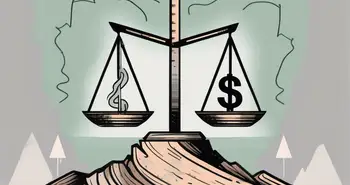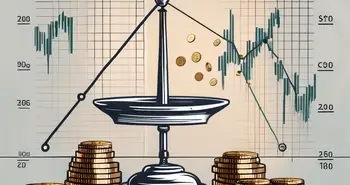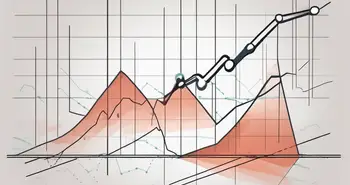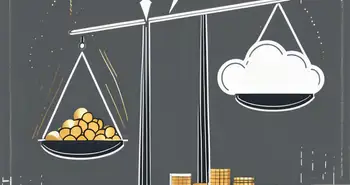Sharpe Ratio Explained: A Simple Guide to Measuring Risk-Adjusted Returns
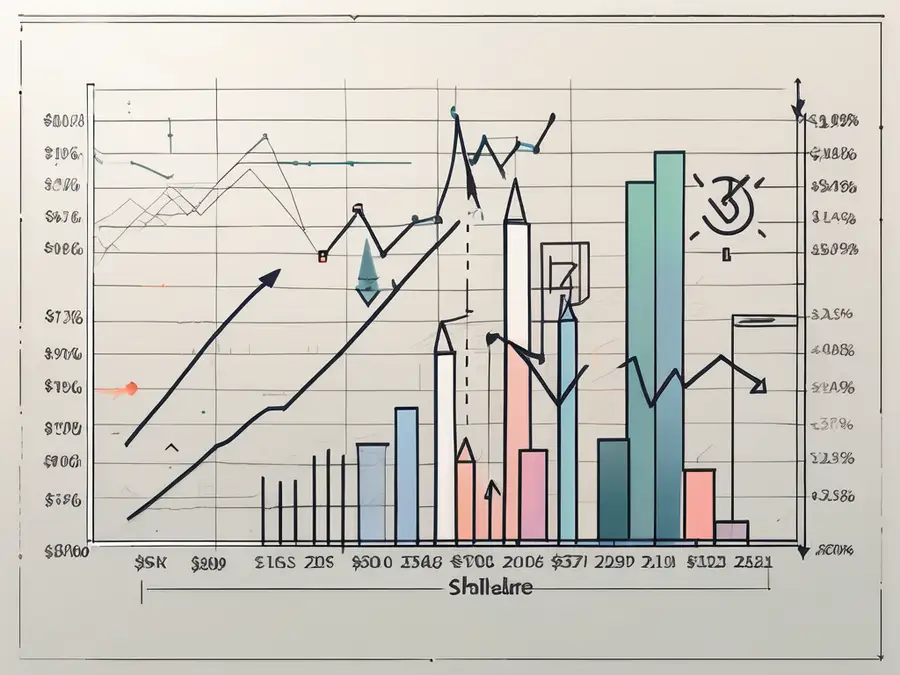
The Sharpe Ratio is a popular metric used in finance to assess the performance of an investment as compared to a risk-free asset, while adjusting for its risk. Understanding this ratio is vital for investors who want to evaluate how well they are being compensated for the risk taken. In this guide, I will take you through the essentials of the Sharpe Ratio, its components, its calculation, benefits, and limitations, all while providing insights from my extensive experience in the field.
Understanding the Basics of Sharpe Ratio
Definition of Sharpe Ratio
The Sharpe Ratio is defined as the ratio of the excess return of an investment over the risk-free rate to the investment's standard deviation. In simpler terms, it tells us how much return we can expect per unit of risk. A higher Sharpe Ratio indicates that the investment offers better risk-adjusted returns.
This concept was developed by William F. Sharpe in 1966 and has since become a cornerstone in modern portfolio theory. By analyzing the relation of excess returns to risk, investors can make more informed decisions. The formula for the Sharpe Ratio is typically expressed as (Rp – Rf) / σp, where Rp is the return of the portfolio, Rf is the risk-free rate, and σp is the standard deviation of the portfolio's excess return. This mathematical representation allows for a clear understanding of how risk and return interact, providing a valuable tool for both individual and institutional investors alike.
Importance of Risk-Adjusted Returns
When it comes to investing, not all returns are created equal. Simply looking at the raw return percentage does not provide the complete picture, as it doesn’t account for the risk involved. Risk-adjusted returns, as considered through the Sharpe Ratio, allow investors to evaluate how their performance stacks up against others who may have taken on significantly different levels of risk.
For example, two funds might show similar returns, but if one has significantly higher volatility, it may not be a suitable investment. The Sharpe Ratio helps clarify these dynamics, guiding investors to select options that align best with their risk tolerance and investment goals. Additionally, the Sharpe Ratio serves as a comparative tool, enabling investors to assess the performance of various assets or funds within a portfolio. By benchmarking against the risk-free rate, it becomes easier to identify which investments are truly rewarding and which may be merely masking risk with high returns. This nuanced understanding can lead to more strategic asset allocation and ultimately enhance the overall performance of an investment portfolio.
Components of Sharpe Ratio
Expected Portfolio Return
The expected portfolio return is the amount an investor anticipates earning from an investment. This value is usually based on historical performance, predicted market trends, or specific financial models. Understanding how this return is computed is critical, as it serves as the numerator in the Sharpe Ratio formula. Investors often utilize various methods to estimate this return, including fundamental analysis, which examines economic indicators and company performance, and technical analysis, which looks at price movements and trading volumes. Additionally, the expected return can be influenced by macroeconomic factors such as interest rates, inflation, and geopolitical events, making it essential for investors to stay informed and adaptable in their strategies.
Risk-Free Rate
The risk-free rate is typically represented by the yield on government securities, such as U.S. Treasury bonds. This rate serves as a benchmark for evaluating investment performance. The rationale is simple: any investment should at least outperform this baseline return to justify its associated risks. The risk-free rate can fluctuate based on economic conditions and monetary policy, and it is often used as a reference point for calculating the equity risk premium. Moreover, understanding the risk-free rate helps investors gauge the opportunity cost of investing in riskier assets, as it provides a clear comparison against which the potential returns of those assets can be measured.
Portfolio Standard Deviation
Standard deviation measures the amount of variability or volatility of investment returns. A higher standard deviation indicates more risk, which can affect how investors interpret the Sharpe Ratio. To calculate the standard deviation, one needs a solid understanding of statistical concepts, or reliable financial software tools. This measure not only helps in assessing the risk associated with a particular portfolio but also aids in comparing the risk profiles of different investment options. Furthermore, investors often look at the historical standard deviation to gauge how an asset has reacted to market fluctuations in the past, providing insights into its potential future behavior. Understanding this component is crucial, as it allows investors to make informed decisions about their risk tolerance and investment strategies.
Calculating the Sharpe Ratio
Step-by-Step Calculation Process
The formula to calculate the Sharpe Ratio is:
Sharpe Ratio = (Expected Portfolio Return - Risk-Free Rate) / Portfolio Standard Deviation
Follow these steps:
- Determine the expected portfolio return, typically via historical data.
- Identify the risk-free rate based on current market conditions.
- Calculate the standard deviation of the portfolio's returns.
- Substitue these values into the Sharpe Ratio formula.
Interpreting the Results
The resulting Sharpe Ratio can fall anywhere from negative values to extremely high positives. A negative ratio suggests that the investment is underperforming the risk-free rate, indicating a poor investment choice. A ratio above 1 is often seen as acceptable, while anything above 2 is considered excellent and worth further exploration.
Understanding the implications of the Sharpe Ratio is crucial for investors. A higher Sharpe Ratio indicates that the portfolio is providing a better return for the level of risk taken, which is particularly valuable in volatile markets. Investors often compare the Sharpe Ratios of different portfolios or funds to determine which investment offers the most attractive risk-adjusted returns. This comparison can lead to more informed decisions about asset allocation and diversification strategies.
Moreover, it is important to note that while the Sharpe Ratio is a powerful tool, it should not be used in isolation. Other metrics, such as the Sortino Ratio, which accounts for downside risk, and the Treynor Ratio, which considers systematic risk, can provide additional insights into an investment's performance. By using a combination of these metrics, investors can gain a more comprehensive understanding of their portfolios and make better-informed investment decisions.
Benefits of Using Sharpe Ratio
Comparing Investment Opportunities
The Sharpe Ratio provides a clear lens through which investors can compare different investment opportunities, regardless of their level of risk. By using this ratio, I have been able to shift my strategy effectively, reallocating funds to higher-performing assets that still align with my risk preferences.
Evaluating Portfolio Performance
Monitoring your portfolio’s Sharpe Ratio over time creates a narrative of how well the investments are performing relative to their risk. This allows for timely adjustments, fostering ongoing optimization of investment strategies.
Limitations of Sharpe Ratio
Assumptions and Simplifications
While the Sharpe Ratio provides valuable insights, it does rest on some assumptions, such as returns being normally distributed. Real-world returns can often exhibit skewness and kurtosis, making them less predictable and possibly misleading when solely relying on the Sharpe Ratio.
Potential Misinterpretations
Investors might misinterpret a high Sharpe Ratio without considering the context. An impressive Sharpe Ratio may not mean much if the underlying investment is moving through a thin market or is correlated with higher risk factors not captured in the ratio.
FAQ
What is a good Sharpe Ratio?
A Sharpe Ratio above 1 is generally considered acceptable, indicating that the investment is providing a reasonable return for its risk. Ratios above 2 are viewed as excellent.
How does the Sharpe Ratio help in portfolio allocation?
The Sharpe Ratio assists in comparing the risk-adjusted returns across various asset classes, thereby guiding effective portfolio diversification and allocation.
Can the Sharpe Ratio be used for any investment?
Yes, the Sharpe Ratio can be applied to stocks, bonds, mutual funds, ETFs, and even entire portfolios, making it a versatile tool for evaluating risk-adjusted performance.
In conclusion, the Sharpe Ratio is more than just a number; it is a guiding framework for smart investment choices. With practical application and informed interpretation, you can ensure your investment journey is guided by sound risk management principles.
Ready to put your knowledge of the Sharpe Ratio into practice and optimize your investment strategy? Look no further than Morpher, the revolutionary trading platform that empowers you to trade with zero fees, infinite liquidity, and the flexibility of fractional investing. Whether you're looking to diversify into cryptocurrencies, forex, or even niche markets like NFTs, Morpher's blockchain-based platform offers a unique trading experience with up to 10x leverage and the safety of a self-hosted wallet. Sign Up and Get Your Free Sign Up Bonus today to start trading the smart way, guided by sound risk management principles.


Painless trading for everyone
Hundreds of markets all in one place - Apple, Bitcoin, Gold, Watches, NFTs, Sneakers and so much more.

Painless trading for everyone
Hundreds of markets all in one place - Apple, Bitcoin, Gold, Watches, NFTs, Sneakers and so much more.

